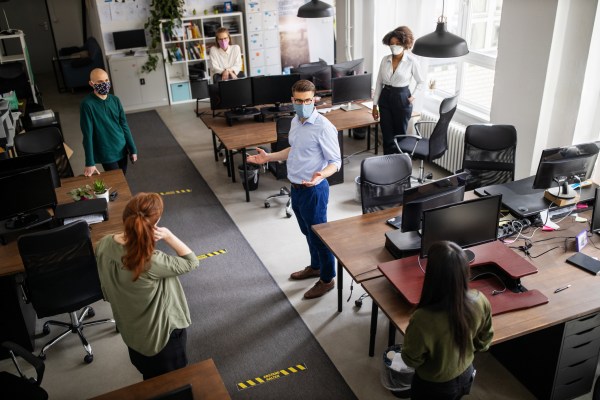
As COVID-19 infections surge in parts of the U.S., many workplaces remain empty or are operating with skeleton crews.
Most agree that the decision to return to the office should involve a combination of business, government and medical officials and scientists who have a deep understanding of COVID-19 and infectious disease in general. The exact timing will depend on many factors, including the government’s willingness to open up, the experts’ view of current conditions, business leadership’s tolerance for risk (or how reasonable it is to run the business remotely), where your business happens to be and the current conditions there.
That doesn’t mean every business that can open will, but if and when they get a green light, they can at least begin bringing some percentage of employees back. But what that could look like is clouded in great uncertainty around commutes, office population density and distancing, the use of elevators, how much you can reasonably deep clean, what it could mean to have a mask on for eight hours a day, and many other factors.
To get a sense of how tech companies are looking at this, we spoke to a number of executives to get their perspective. Most couldn’t see returning to the office beyond a small percentage of employees this year. But to get a more complete picture, we also spoke to a physician specializing in infectious diseases and a government official to get their perspectives on the matter.
Taking it slowly
While there are some guidelines out there to help companies, most of the executives we spoke to found that while they missed in-person interactions, they were happy to take things slow and were more worried about putting staff at risk than being in a hurry to return to normal operations.
Iman Abuzeid, CEO and co-founder at Incredible Health, a startup that helps hospitals find and hire nurses, said her company was half-remote even before COVID-19 hit, but since then, the team is now completely remote. Whenever San Francisco’s mayor gives the go-ahead, she says she will reopen the office, but the company’s 30 employees will have the option to keep working remotely.
She points out that for some employees, working at home has proven very challenging. “I do want to highlight two groups that are pretty important that need to be highlighted in this narrative. First, we have employees with very young kids, and the schools are closed so working at home forever or even for the rest of this year is not really an option, and then the second group is employees who are in smaller apartments, and they’ve got roommates and it’s not comfortable to work at home,” Abuzeid explained.
Those folks will need to go to the office whenever that’s allowed, she said. For Lindsay Grenawalt, chief people officer at Cockroach Labs, an 80-person database startup in NYC, said there has to be a highly compelling reason to bring people back to the office at this point.



